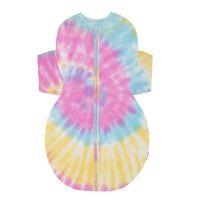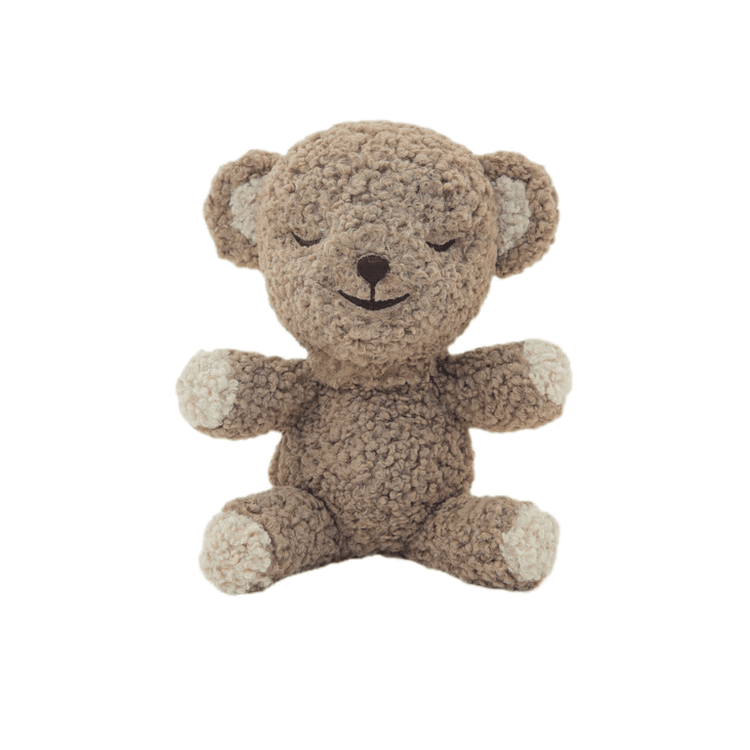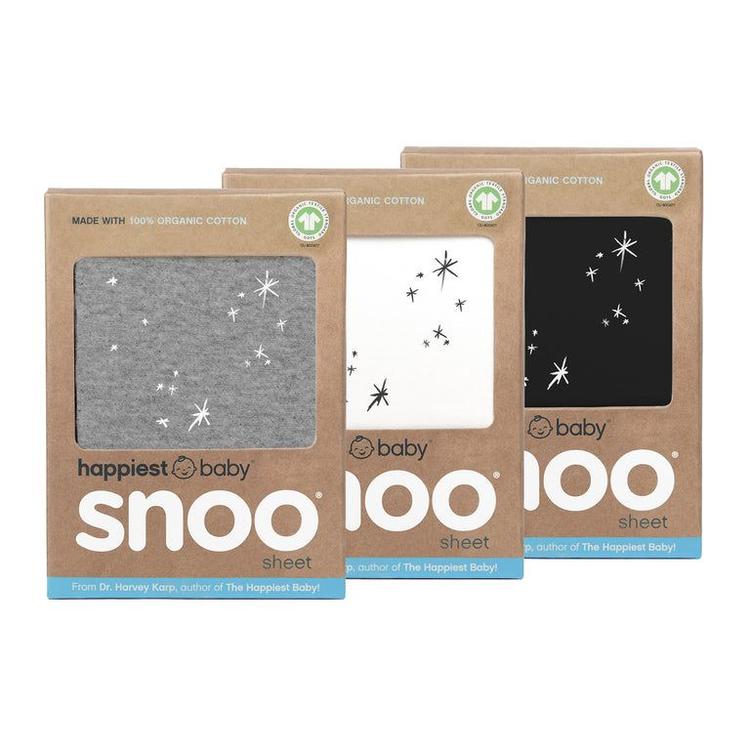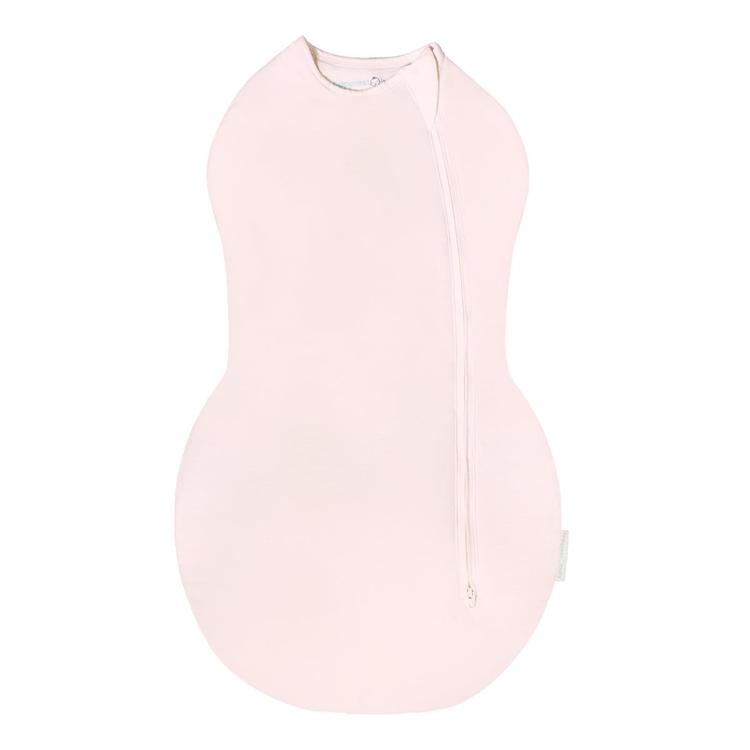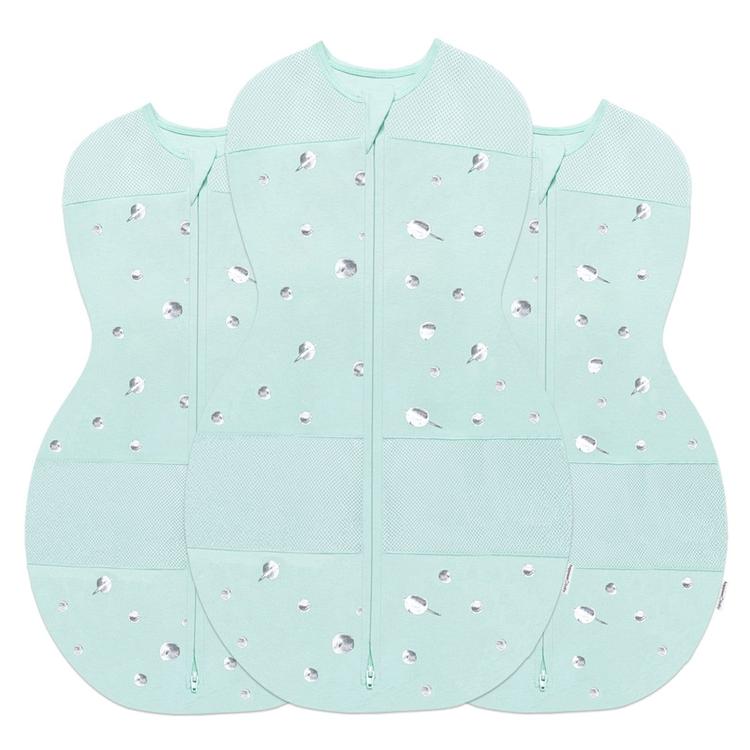Starting solids with your baby is an exciting time…that requires patience, creativity, and an open mind! How—and what—you feed your baby today will establish benefits that can last a lifetime. But before you bust out the blender, grab a bib and spoon, and get pureeing, here are some tips and tricks to make sure your baby's culinary journey is a safe, successful, and delicious one!
Is your baby ready for solid foods?
Before you even think about Googling any baby puree recipes, it is essential to know if your baby is actually developmentally ready to eat solids. The National Health Service (NHS) recommends starting solids once your infant is around 6 months old, though some babies may show signs of readiness earlier than this. No matter what, solids should not be introduced before your little one turns 4 months old. Some common signs of readiness include sitting up solo with good head, neck, and trunk control—and showing interest in gobbling up what is on your plate. But remember, breastmilk and/or infant formula still should take up 95% of your infant’s nutrition. By 9 months, it is about 75% and it only reaches 50% by your bub’s first birthday.
Stage One Baby Food Facts
- Allergies: The NHS now recommends introducing high-allergy foods (like egg whites and mashed peanuts) between 4 and 6 months to help prevent future allergies. If your child has eczema, consult with your paediatrician beforehand.
- Iron: While breastmilk does not have a ton of iron, what it does contain is very well absorbed. When babies start solids, however, that absorption dwindles. To help, pair iron-rich purees with those that contain vitamin C, which will enhance iron absorption.
- Rice cereal: Do not believe the infant cereal hype! Even when fortified with iron, baby rice cereal is still mostly starch and often tinged with arsenic. It is a better idea to stick with oats, barley, millet, farro, or amaranth.
- Fruits vs. veggies: There is zero evidence that your little one will wind up disliking veggies if they taste fruit first!
- 3-day rule: Introduce just one food to your kid about every three days. That will help you determine the cause of any possible reactions, like diarrhoea or rash.
Things to Consider When Making Baby Purees
While it is tempting to dive right into your produce drawer and start blending, there are some guidelines you may want to follow. For instance:
Sometimes it is better to buy organic
It is true that shopping organically can be a bit pricey. But if you would like to incorporate some organic produce into your baby’s purees, it is smart to choose ones that tend to contain the most pesticide residue. These include:
- Apples
- Cherries
- Celery
- Grapes
- Green leafy vegetables
- Nectarines
- Peaches
- Pears
- Peppers
- Strawberries
- Tomatoes
Make purees using healthy liquids
Blend foods into purees using healthy and safe liquids that help to thin out new-to-baby foods.
- Water
- Breastmilk
- Prepared formula
- Low sodium meat or vegetable broth
Do not add these to baby food purees
Babies do not need salt or sugar added to their foods! After so many months on a 100% milk diet, babies are just now learning to appreciate the natural taste of foods. However, as your baby progresses with their eating, consider shaking things up by adding new, natural flavours to purees, such as small amounts of non-spicy herbs and spices like cinnamon, thyme, nutmeg, cilantro, and garlic.
Stage One Baby Food Puree Ideas
Single-ingredient purees are the safest options for young babies. This will help you quickly spot any possible food allergies. (Offering mixed foods can create confusion on what ingredient caused your child’s reaction.) Other hallmarks of stage one purees: They are thin, smooth, and easy for your baby to swallow.
Sweet Potato Puree
This easy-to-cook, high-in-fibre root vegetable will ensure your baby gets plenty of vitamin A to support the healthy development of their eyes. (It is also rich in vitamin C.) Try piercing your sweet potatoes and roasting at 200 degrees Celsius for 45 minutes for a nummy caramelised flavour. (Cool before peeling and pureeing.) When Baby is ready, add a pinch of cinnamon or nutmeg to change up the flavour and broaden your baby’s developing palate.
Banana Puree
The potassium-rich starter food requires zero cooking. Score! Ripe banana puree is a tasty, convenient, affordable baby food that takes nothing more than a bit of fork-mashing. Baby will surely love it on its own, but will likely adore it when mixed with other fruit purees down the road. (Remember: Only single-ingredient purees to start!)
Avocado Puree
Babies' brains and bodies grow by leaps and bounds in their first year of life, and that growth needs to be supported by adequate nutrition. You know what is great for that? High-calorie avocados, which are bursting with essential healthy fats. Avocados do not need to be cooked or blended. A simple fork-mash will do. You will know your avocado is baby-ready when it is soft to touch without being mushy and its inside is a lush, bright green.
Oatmeal Puree
Fibre- and iron-packed oatmeal is a great first food for Baby! Iron plays a crucial role in making sure your baby’s body is well supplied with oxygen. And fibre keeps your little one’s digestion moving. Add 250 ml of old-fashioned oats to 500 ml of boiling water and simmer for about 5 minutes. After it has cooled, puree in the blender or food processor for 1-2 minutes, adding liquid as you go.
Chicken Puree
Many parents worry about offering meat to babies. But pureed meats, like iron-rich chicken, are totally safe—and healthy. Chicken is not only a good source of lean protein, it is packed with zinc, a mineral that helps your baby’s immune system function at its very best. FYI: You will need a powerful blender and a decent amount of liquid to puree your cooked, chopped, skinless breast meat into yummy baby food.
Stage Two Baby Food Puree Ideas: Combination Purees
After trying single ingredient foods, your baby may be ready to graduate to purees with more than one ingredient. Stage two purees are slightly thicker than stage one and can include a mix of fruits, veggies, grains, proteins, and yogurt.
Pea and Pear Puree
This constipation-fighting blend is rich in fibre from both the peas and pears. Peas also contain iron, calcium, and choline, an underrated nutrient that is necessary for brain function and memory. Along with fibre, pears are teaming with potassium and vitamin C. Simply peel and dice your pear and steam them along with peas for about 8 to 10 minutes. Once cool, blend away.
Avocado and Pineapple Puree
Pureed avocado and pineapple offer your baby a creamy tropical taste that will surely excite their taste buds! Avocados are full of omega-3 fatty acids, which are essential for your baby’s healthy brain development. And pineapple is stuffed with calcium, folate, and vitamin C…making it a sweet addition to your baby’s palate. Toss one avocado and about 150 ml of fresh or thawed frozen pineapple into the blender or food processor and puree.
Salmon and Sweet Potato Puree
Omega-3-rich salmon is soft and easy for babies to eat—and high in protein, calcium, and vitamin D. All important nutrients for Baby. And sweet potatoes are packed with potassium, fibre, folate, and more. To make this blend as easy as can be, go ahead and use canned salmon adding as much liquid as you need to come up with the just-right texture for your baby.
Lentil and Mango Puree
Lentils are fully loaded with lots of nutrients to support your ever-growing baby, including fibre, protein, iron, zinc, calcium, potassium, phosphorus, and folate. Sweet and juicy mangoes, on the other hand, offer lots of vitamins C and A, both necessary for a healthy immune system. (Mango’s vitamin C helps Baby absorb iron from the lentils.) Peel and chop your mango before giving it a quick steam and tossing it in the blender with your lentils. While most lentils need to soak before cooking, red lentils are an exception. Just boil them before you puree.
Quinoa and Beef Puree
Protein-packed whole grain quinoa and red meat provide B vitamins necessary for Baby’s brain to function and keep your little one’s skin, hair, and nails healthy. Try cooking up (and draining the fat from) ground beef and blending it with an equal amount of already-made quinoa, which becomes naturally soft when cooked. Add veggie stock as needed to get the proper texture.
Yogurt, Blueberry, and Flaxseed Puree
Plain, unsweetened whole milk yogurt is full of calcium and makes a great source of protein for your baby. Blending in some blueberries will add vibrant colour, antioxidants and vitamin K. Bled up some flaxseeds to provide omega-3 fatty acids, fibre, and even more protein to their nutritious meal.
Apples and Peanut Butter Puree
Take apple puree to the next level by blending it with peanut butter to provide your baby with a healthy dose of magnesium, protein, and choline. (Remember, the NHS now recommends offering potential allergy foods like peanuts to babies to reduce their future risk, even noting that waiting can increase the likelihood of a reaction.) Peal, dice, steam your apples and blend once cool. Next, scoop some smooth, natural, sugar- and salt-free peanut butter into a bowl and mix with warm water until you have a uniform texture. Bring both blends together for some yum! (If you feel your infant may have a food allergy, always consult with your infant’s paediatrician.)
Craving more baby meal ideas?




